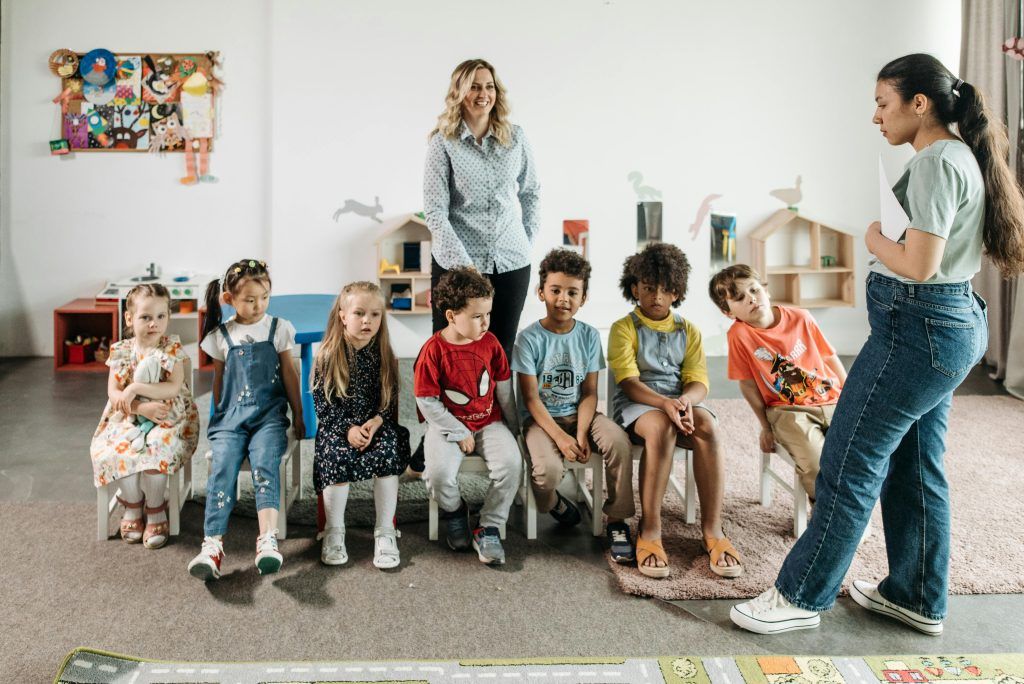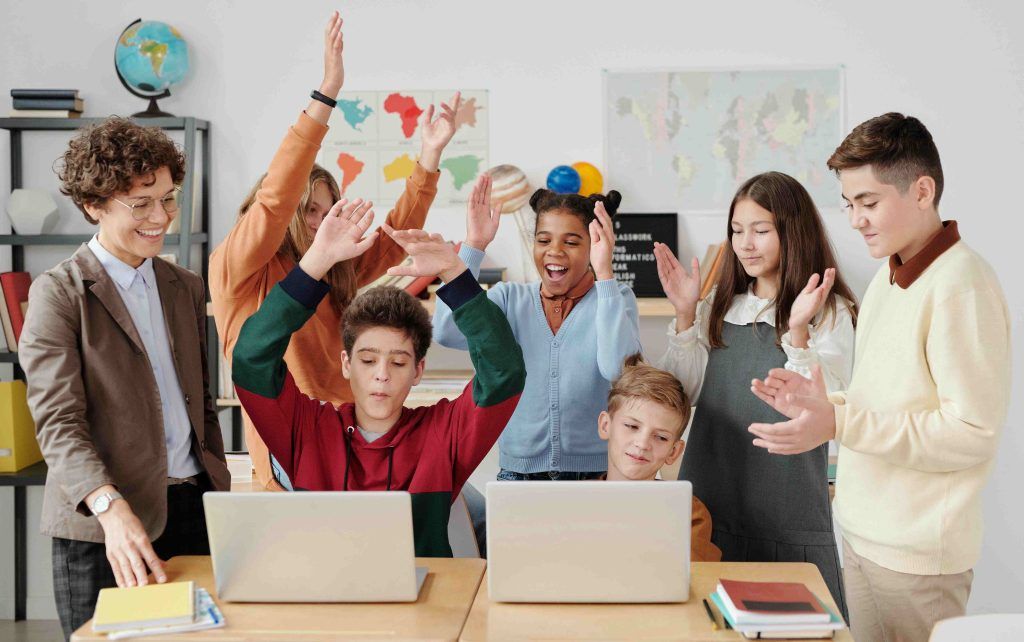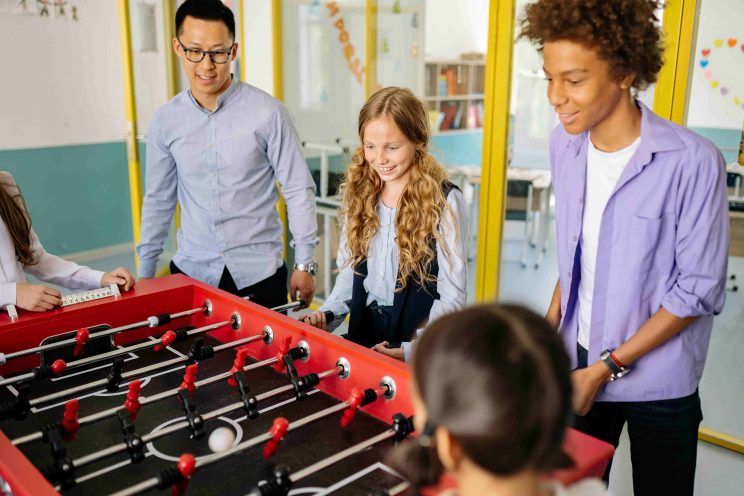Best Brain Breaks for Kids
reviewed by Jo-ann Caballes
Updated on January 20, 2025
It is not surprising that people need breaks to boost their productivity and mental health. Kids are no different. Brain breaks are fun and engaging activities that can improve a child’s attention, increase their energy, and refocus them back on the task at hand. Additionally, they are a great way to reduce anxiety, frustration, and stress. Brain break activities are especially helpful for children who struggle with self-regulation or executive function skills.
What are brain breaks in the classroom?
Brain breaks for the classroom are short mental breaks for kids aimed at helping them refocus and rest. They typically last a couple of minutes and involve different kinds of activities to re-energize children. Attention spans are different for everyone, but they’re even shorter for kids, and the younger they are, the more breaks they need. Quick brain breaks are great for helping students stay on track once their focus starts to fade.
Brain breaks come in different kinds and depend on the age, timing, duration of the breaks, and type of activity. Whatever the primary focus might be, every form of brain break involves:
Physical Activity
Young kids generally have a lot of energy they have to rein in during class. These movement breaks in the classroom help them release energy and improve blood flow to the brain. Things like stretching, dancing, jumping jacks, and yoga work perfectly as brain-break activities for elementary.
Mental Stimulation
Sometimes, children need a mental shift to activate a different part of the brain, distracting them from regular academic tasks. This involves puzzles, riddles, and creative tasks.
Relaxation
Another popular form of classroom brain breaks is relaxation. Deep breathing, meditation, and listening to music are designed to reduce stress and help students regain focus.
Sensory Engagement
This fun brain break is designed to engage kids’ senses, which works wonders for a mental reset. Tools like clay, slime, and sensory bottles come in handy when kids get tired of soaking in new material.
Social Interaction
Group activities are an integral part of kids’ brain breaks. Not only does it promote social skills and collaboration, but it also helps children reset and refocus.
The Science Behind Brain Breaks
Various studies support the importance of classroom brain breaks and highlight the benefits of them. Brain breaks have numerous benefits for children’s physical, cognitive, and emotional well-being. For instance, fun and quick brain breaks help store memories and make connections between thoughts and ideas, boosting attention, memory, and creativity.
Another study has shown that regular breaks help reduce stress and manage classroom behavior in a more positive and efficient way. Children are presented with the opportunity to develop social skills through play and collaborative activities during brain breaks.
Lastly, short physical breaks reduce undesired behaviors in the classroom, improving kids’ on-task focus. This fosters a more productive learning environment for everyone involved (yes, teachers, too!).
Ways to incorporate brain breaks in the classroom: insights from an expert
Jessica Plonchak, Executive Clinical Director at ChoicePoint Health, suggests implementing periods of rest and leisure with simple games like “Red Light, Green Ligh,” and “Line Up’, when class is in session.
“Red Light, Green Light is performed this way. The teacher calls Green Light, and everyone has to move to the finish line until the Red Light is called.”
Line Up is another physical activity that uses a touch of logic. Ask children to line up using specific criteria, like someone's birthdate or month, their hair color, or height. This allows children to not only get to know their peers, allowing better communication but also helps them reenergize, boosting their creativity as well. Try some fun combos!
Jessica told us why brain breaks are important:
“Constantly working or studying is draining for everyone, not just students.”
How to use brain breaks in the classroom
Brain breaks are designed to give students a brief rest from what they’re doing. These quick, structured resets can use physical movement, mindfulness exercises, or sensory activities. Brain breaks can be done individually (deep breathing) or in groups (like Red Light, Green Light).
It’s important to note that different brains need different kinds of brain breaks. For some, classroom movement breaks are a great way to sharpen their focus and release excess energy. Others may need quiet time to calm their minds.
Brain breaks usually take a couple of minutes of instructional time. Having had a brief rest from learning, children feel ready to return to work with a fresh perspective, focus, and ease.
How to prepare for a brain break
As the lesson is planned, it is vital to evaluate how complex the material is. Younger kids may need brain breaks after 10 to 25 minutes of intensive work. And they have to be taken before they feel distracted, fatigued, or lacking focus.
How to use brain breaks
- Initiate the brain break
Set the timer and start the break. Let the kids know how long it will take; a visual timer is a good idea. Setting a specific time will ensure that kids won’t be disappointed when the break is over.
- Guage the mood
As the break is on, be prepared to help kids. It may sound obvious, but providing support and adjusting the brain break when necessary can impact the rest of the lesson. For instance:
- If you plan an energetic break, kids can lose track and become hectic. When they seem overly energetic, just switch to a calmer option like yoga.
- Stay close to those who have trouble with the brain break.
- Not all children have excellent motor skills. Some will need modifications. For example, if they can’t jump on one foot, have them use two feet.
- Not everybody will feel comfortable with the activity. See if you can guide them along the way. It’s also okay to opt out and just have a moment of peace.
Finish up the break
Give cues about how much time remains for a break. Say something like: “We’ll be going back to our lesson in 1 minute.” A 10-second countdown is also an excellent option for a wholesome brain break ending.
- Ask kids about the experience
Give them a little time to express how they feel about the brain break. That’ll give valuable insights on which brain breaks work best.
Do one-on-one tutors use brain breaks?
Yes, one-on-one tutors often use brain break games as part of their teaching strategies to help students stay focused and engaged.

At Brighterly, we use evidence-based methods of fun brain breaks for students, considering their unique math skills, character, and attention span. We don’t duplicate the school’s program. Instead, we identify areas where your child needs the most help. That involves preparing a unique math study plan that matches your kid’s specific request and building every lesson with a couple of fun brain breaks.
Brain Break Ideas for the Classroom
Here are some fun and easy brain break games you can incorporate in every classroom:
Take Five
Allow students to take a break where they do whatever they want, for example, draw, talk to each other, or use their phone. It’s not the most creative break idea, but it’s not always the most creative ideas that work best.
Dance-off
Find an age-appropriate song for your class and just make them dance. When the music stops, ask them to freeze. Whoever doesn’t stop is out. Keep playing until one person remains. Those who dropped out can help you spot the ones who are moving. And also, you can play your students’ favorite songs if they have any!
Mirror, Mirror
“Mirror, Mirror” is a fun activity that comes from acting classes, and it’s sure to make your students laugh. Ask your students to stand in for one another and assign one person to mirror the other one so they have to repeat everything the non-mirror does. After a couple of minutes, make the switch.
The Sea is Rough
Make children stand up and move like they’re under the water. Say the following: “The sea is rough – one. The sea is rough – two. The sea is rough – three. Sea figure, stop dancing in the blue sea!” When you say the last phrase, everyone freezes in the pose of some animal, and you have to guess what animal they are. The first one who can’t keep the pose is out.
Crossbody Craziness
Have the kids stand up with their feet apart and raise their right hand. Now, tell them to touch their left elbow with their right hand while saying, “Left brain, right brain!” Do this for 30 seconds, then switch sides. Crossing the midline of their bodies like this actually stimulates brain activity and helps with coordination.
Category Countdown

This one’s great for a quick mental workout. Pick a category like animals, colors, or fruits. Give the kids one minute to shout out as many words as they can think of in that category. You can even make it a game and have them take turns leading the countdown.
Claire Law, a relational psychotherapist and senior contributor at Four Minute Books, says brain breaks don’t need a lot of prep and can be done pretty much anywhere. Additionally, they’re quick, fun, and they make a huge cognitive difference.
“In my experience, these breaks have transformed the learning environment.”
So, give it a try! A happy, energized brain is a learning brain. By incorporating educational brain breaks, you're not just helping your students stay engaged; you're also setting them up for success. Plus, it makes learning way more fun!
Brain break activities for elementary
Elementary students need a variety of brain break activities during the class. Here is a list of brain breaks for elementary students that can spice things up in the classroom:
- Dance Party
- Simon Says
- Freeze Dance
- Animal Walks
- Breathing Exercises
- Jumping Jacks
- Brain Gym Exercises
- Classroom Yoga
- Story Time
- Silent Ball
- Drawing Time
- Hand Clapping Games
- Stretching
- Draw and Guess
Dance Party
Make them dance to fun, age-appropriate songs for a couple of minutes. That’ll surely burn off some energy and help reset focus.
Simon Says
One player takes on the role of “Simon” and gives instructions like “jump in the air” or “stick out your tongue” to the other players. The action is taken only when the phrase “Simon says” is said. Anyone who fails to follow the instructions is out.
Freeze Dance
If dancing becomes boring, stop the music! Make students freeze in place until it starts again.
Animal Walks
Have students move around the classroom like animals. They can hop like frogs, run like dogs, and stomp like elephants. You can also show them pictures of different animals and ask them to show what they move like.
Breathing Exercises
Not all breaks have to involve movement. Have students have a calm moment by guiding them through deep breathing exercises to help them relax and refocus.
Jumping Jacks
A quick set of jumping jacks can get their heart rates up and is highly effective in shaking off excess energy.
Brain Gym Exercises
Simple gym exercises like squatting or cross crawls (touching the opposite hand to the opposite knee) can help with coordination and focus.
Classroom Yoga
Basic yoga poses like “tree pose,” “downward dog,” and “child’s pose” are quite effective for brain breaks. You can also combine them with a little breathwork.
Story Time
Ask your students to choose an engaging short book or a story. Read a chapter every time children need a little mental reset.
Silent Ball
Make students toss a soft ball around the classroom in silence. If anyone makes a sound, they’re out.
Drawing Time
Have students draw for a couple of minutes. You can make it fun by setting a timer and asking them to draw an animal. Whoever has the best picture wins.
Hand clapping games
Teach students a simple hand-clapping game and ask them to play it during their brain break.
Stretching
Guide students through a series of simple stretching exercises. Reach for the sky, touch your toes, and twist side to side.
Draw and Guess

Jen Jones, a staff developer, curriculum writer, and decodable book author at Hello Literacy, Inc. & Hello Decodables, suggests taking a “Draw and Guess” educational break: students take 30 seconds to 1 minute to draw a simple picture on a small scrap of paper. Then, they pass the paper to another student, who has to guess what’s in the picture.
“This type of quick guessing game activates different cognitive skills and provides mental respite.”
Brain break ideas for middle school
Here are some of the best brain break ideas for middle school:
Note: Many middle school students feel boredom, fatigue, and general disinterest in their subjects. During puberty, hormonal and social changes can cause them to experience a great deal of stress, lack of motivation, and attention problems. That is why it’s important to incorporate brain breaks for middle school to help them navigate their studies more easily and extend their attention span.
Emotional Check-In
This type of brain break revolves around social-emotional learning. Students’ social-emotional needs are extremely important and should not be overlooked. Allowing students to check in and scan their emotions during brain breaks can help with self-regulation and self-soothing and foster a more inclusive and open environment.
Self-regulation is a skill, and if we know anything about adolescents and middle schoolers, we know they sometimes lack this skill big time! Teenagers feel a wide variety of emotions throughout the day and even throughout the minutes. An emotional check-in provides them with the opportunity to look inward and see how they feel. A short break to scan the body and take some deep breaths can help alleviate stress and work through unpleasant emotions.
How do you help students with their emotions during a brain break?
Using emojis or an emotional chart picture can help students identify what’s going on with their emotions. Ask them to take a couple of deep breaths and narrow down how they feel. Depending on what most of the students feel, you can decide on a particular exercise.
If most of the class is feeling negative, stop for in-depth breathwork. You can choose any pattern of deep breathing, but keep in mind that not all kids will feel comfortable holding their breath for a long period of time.
If they are feeling easy and calm, you can practice gratitude. Ask them to think about three things they feel grateful for, and if they are comfortable with it, they can share it with the rest of the class or simply write it down.
At the end of the day, children can feel an array of emotions, like frustration, fatigue, agitation, etc. A full day of learning, socializing, and moving can take a toll on their mood. Hand out a sticky note to each student. Ask them to write down things they are struggling with, problems they have faced, or just how they are feeling overall. After they are done, collect the sticky notes and toss them in a jar so students can leave their worries behind before leaving for home. Acknowledging these feelings and physically “throwing them away” can help with anxiety and stress.
These emotional check-ins can last anywhere from 3 to 5 minutes and be as simple and straightforward as your students need. The main goal here is to learn how to identify and control emotions.
Mindfulness Break
Middle school students often experience extreme academic pressure, not to mention physiological, social, and emotional changes. That, combined, can negatively affect their mood, motivation, and overall school performance. Using mindfulness brain breaks can positively impact students’ well-being, showing them that teachers prioritize their needs rather than grades.
Mindfulness breaks require minimal preparation. You don’t need tools, much space, or even music. It’s an accessible and effective instrument for promoting student wellness. Just ask students to close their eyes, take a couple of deep breaths, and use a visualization strategy, imagining a safe, peaceful place, such as a beach, a forest, or wherever they feel the most calm and authentic. These mindfulness moments create a sense of tranquility and relaxation.
Another mindfulness tool that can be beneficial in the classroom is guided meditation. As it can be practiced anywhere, a school classroom is perfect for a little meditative experience. Studies show that 10 minutes of mindfulness a day can boost students’ performance in science and reading.
Yogi Break
Science backs up movement brain breaks: research suggests that physical activity can enhance cognitive function. Allowing children to move their bodies can improve their overall comprehension, attention, and focus on the task! Have students get out of their chairs and make them move their bodies for 5 minutes.
Yoga is a great option to shift students’ focus and boost their coordination through mindful movements. Even slower-paced stretching movements are advisory: they help students regain control over their bodies. You can also get a visual poster depicting easy yoga poses so that students can choose their “warrior” when they need a more individualized brain break.
Chit-Chat Break
As the day progresses, children can find it hard not to give in to some whispers at their desks. The best thing about it is that you can utilize it as a fun brain break activity! Have an off-topic conversation for a couple of minutes, or allow your students to have their own conversation (they sure have something interesting going on).

If more control is needed, you might have students debate popular movie or TV show characters. Sentence stems are another great way to have a conversation. For instance, a teacher might create a sentence stem, such as “If I had to choose between being invisible or being able to fly, I would choose…” Ask your students to use this sentence stem to have conversations as a group or with each other.
Brain breaks for high school
Let’s review some of the fun brain-break options for high school:
- Rock, Paper, Scissors
- Finding an AI-generated Picture
- Collaborative Story
- Reset and Breathe
- Would You Rather
Rock, Paper, Scissors
Rock, Paper, Scissors is a great brain break game to turn into a short-class tournament. Pair students up; the winning parties in the first round move on to compete against one another, while the runner-ups go back to their seats. Winning students continue to compete until one student wins.
Finding an AI-generated Picture
Prepare a series of 4 artwork images (with one AI-generated) and challenge the students to guess which image is an imposter. Set a timer to 1 minute and make students debate over which one could be AI-generated before time runs out. You can play all together in a class or have students play in small groups.
Collaborative Story
Make a Google Doc and have one student come up with a sentence they’ve made up. Next, ask each student to add a sentence until everybody in the class has contributed. If you don’t have enough time to give every student a chance to come up with a sentence, break the class into groups of three people. And finally, read the story back to the class to see what the final result is.
Reset and Breathe
Turn off the lights in the classroom, set a timer for up to 5 minutes, and turn on some calm and meditative background music. Allow students to sit back, relax, and close their eyes. This particular brain break is designed to help students process their emotions and what they’ve learned in the classroom and simply clear their minds.
Would You Rather
Create pairs and have students discuss fun “would you rather” questions. Here are some ideas for such questions:
- Would you rather be able to talk with animals or speak all foreign languages?
- Would you rather live without the internet or AC and heating?
- Would you rather travel the world for a year on a shoestring budget or stay in only one country for a year but live in luxury?
A fun way to add movement to this brain break activity is to do it together as a class. Ask the question out loud and have students go to one side of the room or the other to show which option they’d rather choose.
Conclusion
To sum up, brain break activities are an essential tool in the classroom and during one-on-one learning. It offers a quick recharge and boosts academic focus and overall performance. By adding different physical, mental, and social activities, teachers can help students with concentration, emotional processing, and social interactions. Brain breaks are adaptable to the needs of different age groups and support both academic and personal growth.
Brighterly’s approach is aligned with pedagogical principles that integrate brain break activities to ensure every child’s potential is revealed. Our fun and joyful lessons are built by experienced tutors who aim not only to teach your child math but also to inspire them to love the subject.
Book a free lesson now and see how effective math teaching can be!


















